On March 16, 2023, the EastFruit project held the first online conference on the situation in the market of frozen fruits, berries, and vegetables. The recording of the conference is available at this link (in Russian).
Andriy Yarmak, economist at the Investment Center of the Food and Agriculture Organization of the United Nations (FAO), presented an analytical review of the global market for frozen berries, fruits, and vegetables at the event. The expert noted that the fruit and vegetable freezing segment is one of the most promising segments of the entire horticultural business. The global trade in frozen fruits, berries, and vegetables is growing by 6% or $740 million annually, with the fruit segment growing faster than the vegetable segment. At the same time, the total volume of global trade in frozen fruits and vegetables reached $14.2 billion in 2021, excluding the segment of frozen french fries, which is a separate business.
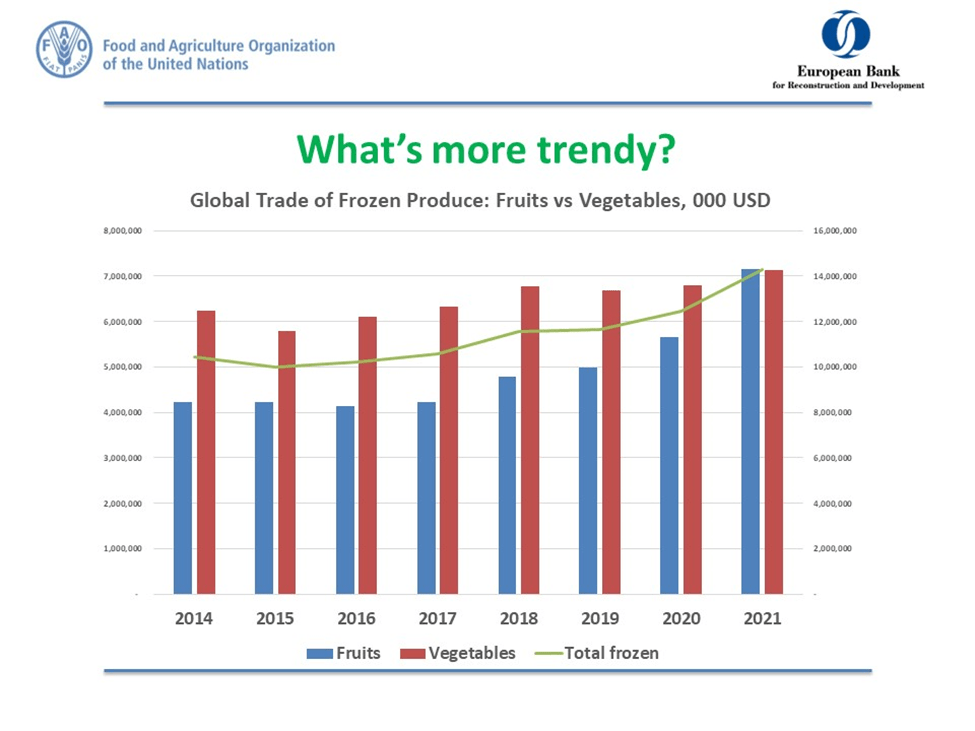 According to the FAO expert, frozen vegetables and fruits for the HoReCa segment have many advantages that most restaurants and hotels do not know about. Therefore, freezers and traders who sell frozen vegetables and fruits should pay attention to promoting these benefits, which will contribute to the even faster growth of the segment.
According to the FAO expert, frozen vegetables and fruits for the HoReCa segment have many advantages that most restaurants and hotels do not know about. Therefore, freezers and traders who sell frozen vegetables and fruits should pay attention to promoting these benefits, which will contribute to the even faster growth of the segment.
 The fastest-growing segment of the international trade in frozen fruits and vegetables is the exports of frozen exotic fruits. This segment, according to rough estimates by Andriy Yarmak, is growing by an average of 15% per year, but there are no exact statistics. At the same time, it is thanks to exotic fruits that the entire segment of fruits, excluding berries, is growing by an average of 12% per year, or approximately $350 million.
The fastest-growing segment of the international trade in frozen fruits and vegetables is the exports of frozen exotic fruits. This segment, according to rough estimates by Andriy Yarmak, is growing by an average of 15% per year, but there are no exact statistics. At the same time, it is thanks to exotic fruits that the entire segment of fruits, excluding berries, is growing by an average of 12% per year, or approximately $350 million.
Slightly slower, but also very dynamically, the segment of frozen berries is growing. The annual increase in exports in this category reaches $200 million, or almost 10%. The main export position among berries in 2021 was frozen raspberries, which surpassed the long-term leader – strawberries. The frozen blueberry segment is also expected to grow in the coming years.
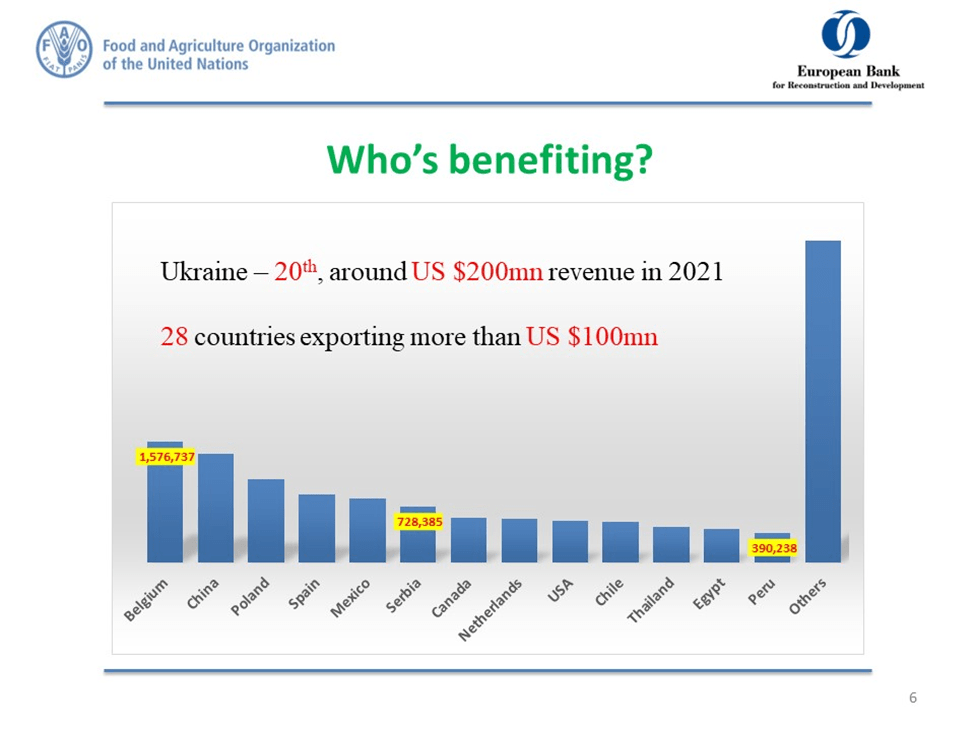 Belgium is the global leader in the exports of frozen fruits and vegetables. China and Poland are also in the TOP-3. We note the sixth place – Serbia which annually earns more than $700 million from the exports of frozen fruits and vegetables. The bulk of this revenue for Serbia is brought by frozen raspberries. In 2021, Ukraine also entered the TOP-20 global leaders for the first time with a revenue of more than $200 million. In total, 28 countries worldwide export frozen fruits and vegetables worth more than $100 million a year each.
Belgium is the global leader in the exports of frozen fruits and vegetables. China and Poland are also in the TOP-3. We note the sixth place – Serbia which annually earns more than $700 million from the exports of frozen fruits and vegetables. The bulk of this revenue for Serbia is brought by frozen raspberries. In 2021, Ukraine also entered the TOP-20 global leaders for the first time with a revenue of more than $200 million. In total, 28 countries worldwide export frozen fruits and vegetables worth more than $100 million a year each.
 By the way, Ukraine is the second in the world in terms of growth in frozen fruit and vegetable exports, increasing exports by 24% or $24.3 million per year. Malaysia is the first, thanks to the rapid growth in the consumption of frozen exotic fruits. In terms of export growth, Poland remains the leader, increasing exports by an average of $62.4 million per year. Thailand, Serbia, Egypt, and Spain are also in the TOP-5.
By the way, Ukraine is the second in the world in terms of growth in frozen fruit and vegetable exports, increasing exports by 24% or $24.3 million per year. Malaysia is the first, thanks to the rapid growth in the consumption of frozen exotic fruits. In terms of export growth, Poland remains the leader, increasing exports by an average of $62.4 million per year. Thailand, Serbia, Egypt, and Spain are also in the TOP-5.
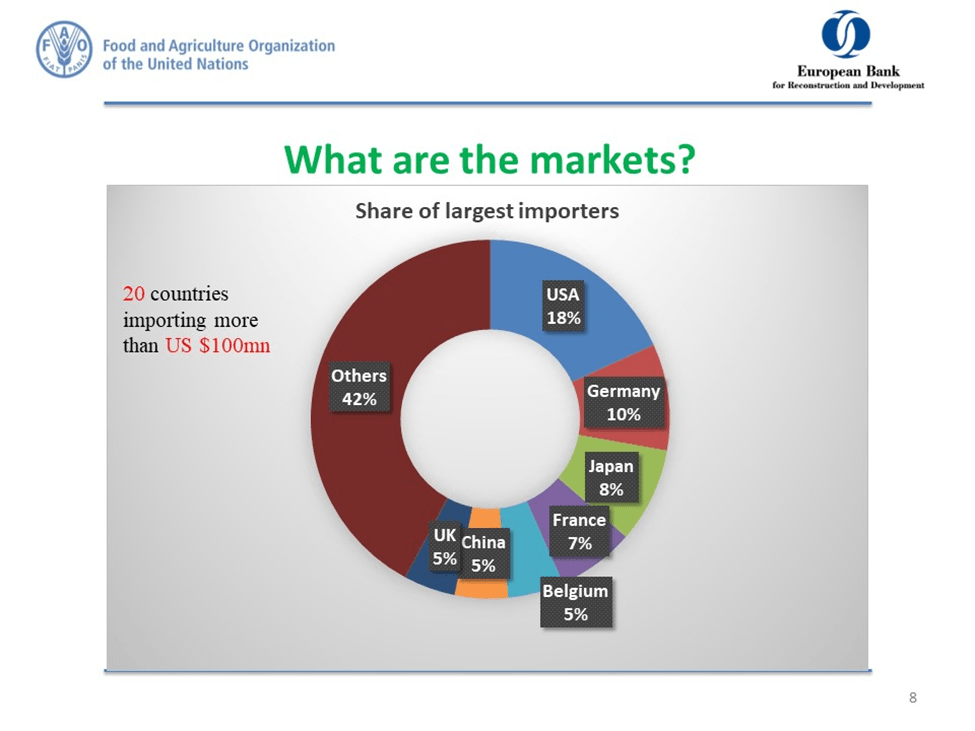 “The markets for frozen fruits and vegetables are much more consolidated. These are predominantly countries with a high-income level of population and a high pace of life. Thus, the 5 largest importing countries, the USA, Germany, Japan, France, and Belgium, account for almost half of the world’s frozen fruit and vegetable imports,” says Andriy Yarmak.
“The markets for frozen fruits and vegetables are much more consolidated. These are predominantly countries with a high-income level of population and a high pace of life. Thus, the 5 largest importing countries, the USA, Germany, Japan, France, and Belgium, account for almost half of the world’s frozen fruit and vegetable imports,” says Andriy Yarmak.
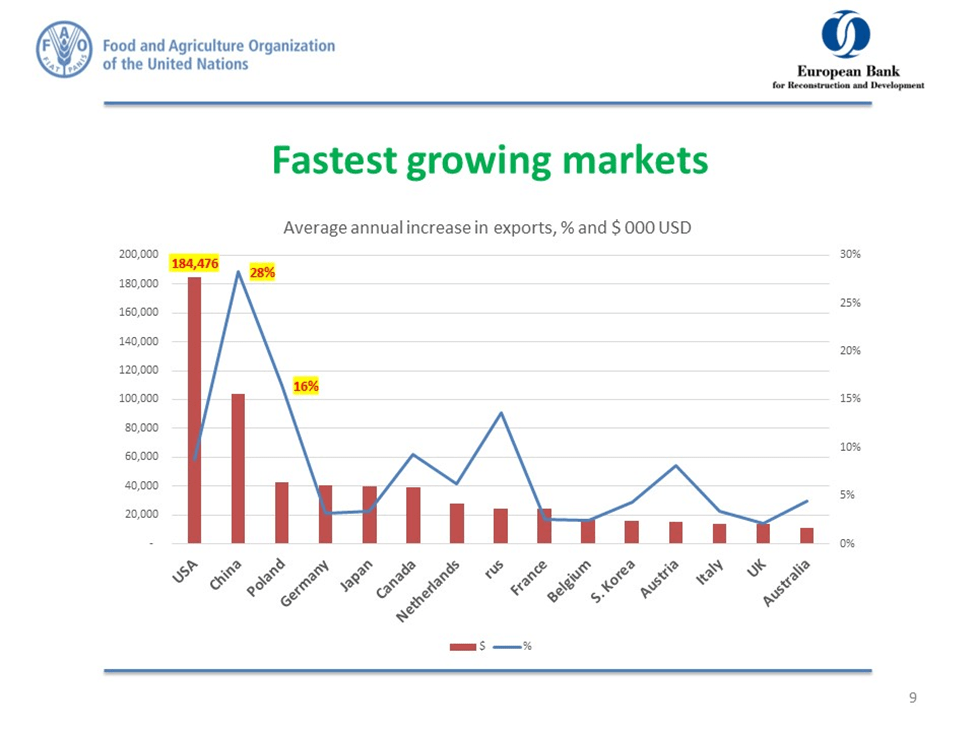 At the same time, the United States, China, and Poland are increasing their imports at the fastest pace. For Poland, which is also the leader in terms of export growth, the increase in imports is a forced measure that allows it to remain in this market.
At the same time, the United States, China, and Poland are increasing their imports at the fastest pace. For Poland, which is also the leader in terms of export growth, the increase in imports is a forced measure that allows it to remain in this market.
“For countries that are just starting to increase the exports of frozen fruits and vegetables, primarily Uzbekistan, I would recommend paying attention to the USA, Canada, the EU, and Japan. If producers can provide a system for controlling the safety and quality of products necessary for deliveries to these regions, in the future, they will have no problems selling products to any other country. I expect that in the medium and long term, sales of frozen fruits and vegetables to Southeast Asia and the Middle East will grow fast, and the geography of large importing countries can seriously expand,” the FAO expert believes.
The use of the site materials is free if there is a direct and open for search engines hyperlink to a specific publication of the East-Fruit.com website.




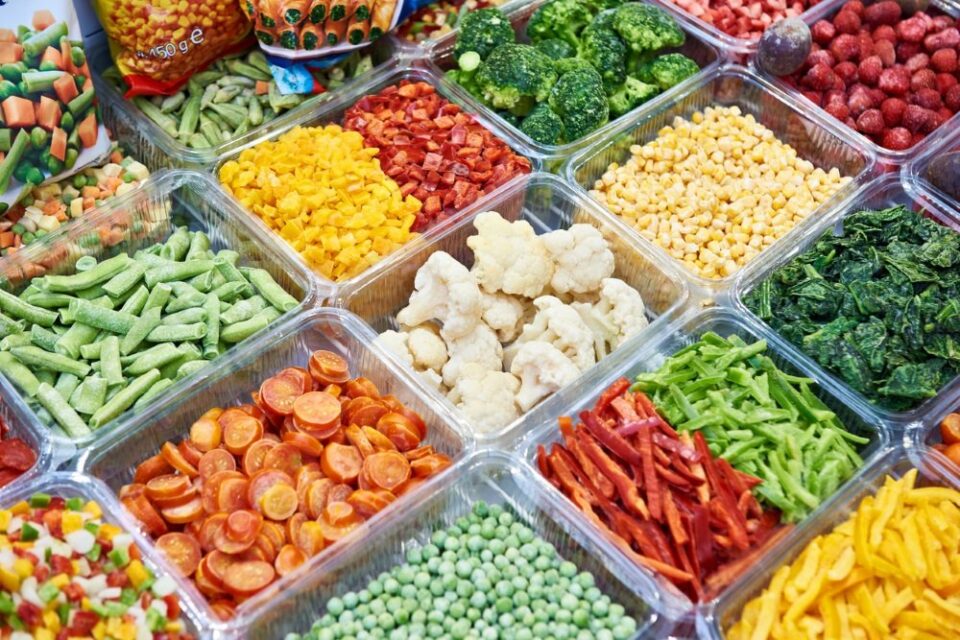
1 comment
Very interesting insights indeed in the world market of vegs & fruits. Many thanks.